 | © 2001-2024 ./) . . ./) . . |
Great choice! Your favorites are temporarily saved for this session. Sign in to save them permanently, access them on any device, and receive relevant alerts.  Warren Luhrs, founder of Hunter Marine began in the boat building business, first with his father and brother at Henry Luhrs Sea Skiffs and then Silverton Sea Skiffs. Both companies were quite successful. Being an avid sailor, Luhrs had the idea of applying production line efficiencies to the sailing industry. In 1973, the first Hunter sailboat was launched. This was the HUNTER 25, designed by John Cherubini. This boat, as well as may models that followed were extremely well received. Hunter Marine soon became a major force in the sailboat industry. Luhrs became involved in single handed ocean racing and set many records aboard Thursday’s Child and Hunter’s Child. These floating test beds became the basis for many of the innovations that have appeared in Hunter production models. These include B & R rigs, arches and water-ballast. Hunter was sold in August 2012 to Mr. David E. Marlow, builder of Marlow Yachts.  Associations- JY 15 Class
- Moorings Yacht Charter
- Chuck Burns
- Cortland Steck
- Glenn Henderson
- Hunter Design
- Hunter Design Group
- Hunter Design Team
- John Cherubini
- John Cherubini/Bob Seidelmann
- J. Robert Seidelmann
- Rod Johnstone
- Warren Luhrs
100 sailboats built by Hunter Marine Hunter 25 Box Top Hunter 50 CC Hunter 36 LegendHunter 45 wk.  Hunter 27 Edge Hunter 25.5 Hunter 40.5 LegendHunter 41 ds.  Hunter 30-2Hunter xcite.  Hunter 37.5 Legend Hunter 33.5Hunter 22-2.  Hunter 40-2 Hunter 32 Vision Hunter 35 Legend WK Hunter 19-1 Hunter 43 Legend Hunter 41 ACHunter 35 legend wk + 246.  Hunter 40-1 Hunter 27-2 Hunter 45 DS Hunter 29.5 Hunter 42 Passage CC Hunter 35 Legend Hunter 450 Passage Hunter 31-2 Hunter 26.5Marlow-hunter 31.  Hunter HC 50 Hunter 37 Legend Hunter 36-2Hunter 33-2, hunter 22 fixed keel.  Hunter 28.5 Hunter 18.5 Hunter 426 DS Hunter 45 CCMoorings 335.  Moorings 295Hunter 50 ac.  Hunter 35.5 Legend Hunter 23.5 Hunter 19-2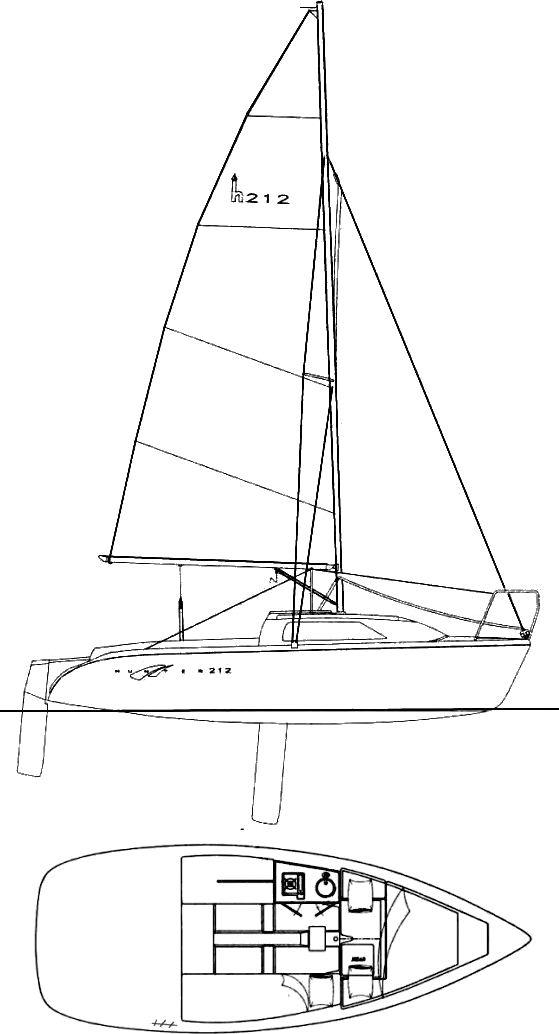 Hunter e36 Performance Hunter 27-3 Hunter 45 Legend Hunter 36 Vision ©2024 Sea Time Tech, LLC This site is protected by reCAPTCHA and the Google Privacy Policy and Terms of Service apply. 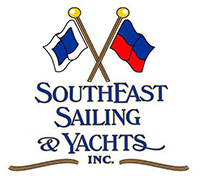 MARLOW HUNTER 15High freeboard, a raised boom and sturdy FRP construction make the Marlow-Hunter 15 daysailer a safe, versatile boat that both families and greenhorn sailors will love. Designed with the novice in mind, the high sides, contoured self-bailing cockpit, and a comfortable wide beam will lend a confident feeling while under sail. When the kids take to the water, these same design elements will provide peace of mind for the parents as well. The Marlow-Hunter 15 is easy to trailer, rig and launch and will carry a crew of four. Whether you’re a seasoned sailor looking to bang around the buoys or a family on a Sunday outing, the Marlow-Hunter 15 is a fun, versatile boat that fits your sailing lifestyle! The fun begins at just $10,123.  To see more Click Here or Email us at [email protected] MARLOW HUNTER 15 Specs- Length Overall 14’6″ 4.42 m
- Beam 6’6″ 1.98 m
- Draft – Board Up 6″ 0.15 m
- Draft – Board Down 3’0″ 0.92 m
- Mast Height 21’6″ 6.55 m
- Sail Area 107 sq ft 9.94 sq m
- Basic Weight 500 lb 227 kg
- Towing Weight 750 lb 340 kg
- Maximum Capacity 926 lb 420 kg
- CE Classification D
- New Sailboats
- Sailboats 21-30ft
- Sailboats 31-35ft
- Sailboats 36-40ft
- Sailboats Over 40ft
- Sailboats Under 21feet
- used_sailboats
- Apps and Computer Programs
- Communications
- Fishfinders
- Handheld Electronics
- Plotters MFDS Rradar
- Wind, Speed & Depth Instruments
- Anchoring Mooring
- Running Rigging
- Sails Canvas
- Standing Rigging
- Diesel Engines
- Off Grid Energy
- Cleaning Waxing
- DIY Projects
- Repair, Tools & Materials
- Spare Parts
- Tools & Gadgets
- Cabin Comfort
- Ventilation
- Footwear Apparel
- Foul Weather Gear
- Mailport & PS Advisor
- Inside Practical Sailor Blog
- Activate My Web Access
- Reset Password
- Customer Service
  Dufour 44 Used Boat Review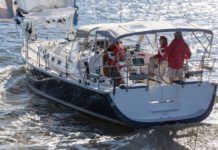 Blue Jacket 40 Used Boat Review Catalina 270 vs. The Beneteau First 265 Used Boat Match-Up Ericson 41 Used Boat Review How to Create a Bullet-Proof VHF/SSB Backup Tips From A First “Sail” on the ICW Tillerpilot Tips and Safety Cautions Best Crimpers and Strippers for Fixing Marine Electrical Connectors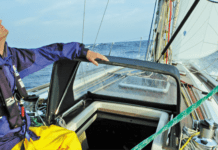 Solving the Dodger Dilemma Polyester vs. Nylon Rode Getting the Most Out of Older Sails How (Not) to Tie Your Boat to a Dock Fuel Lift Pump: Easy DIY Diesel Fuel System Diagnostic and Repair Ensuring Safe Shorepower Sinking? Check Your Stuffing Box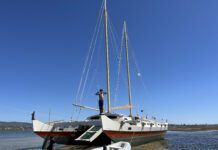 Why Choose the Wharram Design?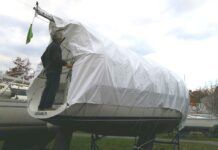 Winterizing: Make It Easy With Checklists Boat Improvements for the Technically Illiterate What Do You Do With Old Fiberglass Boats? Stopping Holding-tank Odors Giving Bugs the Big Goodbye Galley Gadgets for the Cruising Sailor The Rain Catcher’s Guide Sailing Gear for Kids What’s the Best Sunscreen? UV Clothing: Is It Worth the Hype? Preparing Yourself for Solo Sailing R. Tucker Thompson Tall Ship Youth Voyage On Watch: This 60-Year-Old Hinckley Pilot 35 is Also a Working… On Watch: America’s Cup On Watch: All Eyes on Europe Sail Racing Dear ReadersThe Hunter 27 is a boat built to a price--a low price--and it shows; but it may represent a good value.The Hunter 27 is the smallest boat in the Hunter line, which runs up to 43′ in length. The Hunter 27 is a popular boat with first-time sailboat buyers, and with small-boat sailors purchasing their first auxiliary cruising boat. Since the boat was introduced in 1975, thousands have been built.  Like other boats with a reasonably long production run, the Hunter 27 has gone through minor changes since its introduction. Wheel steering is now standard. The boat utilizes a split backstay to allow a stern boarding ladder and to prevent the helmsman from hitting his head on a centerline backstay. All the ports open for ventilation, The mainsheet lead has been altered, and there have been other minor modifications, such as a switch to European-style pulpits and running lights. Judging from the response of Hunter owners we’ve talked to, all Hunters, including the 27, are purchased for one reason: price. The Hunter 27 is just about the cheapest diesel-powered 27′ cruising boat money can buy. In their advertising literature, Hunter stresses that efficiency in construction, standardization of components, and low overhead keep their prices low, To some extent, this is true, and it is neither new, nor is it anything to be ashamed of. The Herreshoff Manufacturing Company, known neither for cheap boats nor low quality, pioneered in component standardization and assembly-line construction. By eliminating factory-installed options, every Hunter 27 can be built the same. No going to the stockroom for an optional item. No time-consuming reading of each boat’s specifications as it moves down the assembly line. There are trade-offs, however. An inability to custom-tailor a boat. A lack of flexibility in deck layout. The Hunter 27 owner must customize his boat at the dealer level, or do it himself. This appeals to dealers, who often make as much on the installation of options as they do on commissions. The Hunter 27 is a bit high-sided and sterile looking. High freeboard and a high cabin trunk are almost necessary in a 27, boat that claims over 6′ of headroom. The sterility comes from the Hunter bone white on bone white color scheme, and paucity of external teak trim. Exterior teak is to the fiberglass boatbuilding industry what chrome is to Detroit. There are no hull and deck color options. Construction Construction of the Hunter 27 is solid glass layup, with plywood reinforcement in high-stress areas such as winch mountings and locker tops. Gelcoat and finish quality of the hull molding are good. No roving printthrough is evident, and the hull is quite fair—more than can be said for many more expensive boats. The hull-to-deck joint of the Hunter 27 is simple and strong. The hull molding has an internal flange molded at right angles to the hull at deck level. This flange is heavily coated with adhesive bedding, the deck molding is laid over the flange, and the joint covered with a slotted aluminum toerail which is through-bolted with stainless steel bolts at 6-inch intervals. This is an obvious and very satisfactory answer to the hull-to-deck joint problem. The flaying surfaces of the joint appear to match well, and the adhesive compound has squeezed out along the joint where it can be inspected. Across the transom, the joint is less satisfactory. The gelcoat and putty with which the joint is faired at the stern was sloppy on every Hunter 27 we examined. The keel of the Hunter 27 is a narrow, high aspect lead fin weighing 3,000 lbs. The shoal draft version has a much shallower lead fin weighing 3,200 lbs. The additional weight of the shoal keel is to make up for the shift in the vertical center of gravity of the boat that would occur if a shoal keel of the same weight as the deep fin were to be used. The keel-to-hull joint has caused problems in some Hunter 27s. The narrowness of the lead keel at the point of attachment to the hull results in considerable leverage on the hull when the boat heels. Several Hunter 27 owners who returned The Practical Sailor boat owner evaluations report oilcanning of the hull, leaking keelbolts, or vertical misalignment of the hull and keel. We have observed this vertical misalignment in the Hunter 25, but we have not seen it specifically in the 27. 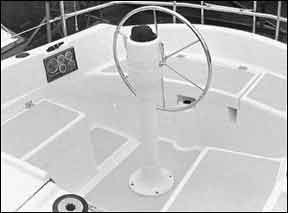 The chainplates of the Hunter 27 consist of stainless steel U-bolts fastened through the anodized aluminum toerail. No backing plates are used with these. The chainplates are likely to carry any load to which they will normally be subjected. However, a simple U-bolt, no matter how heavy, is a poor choice for a primary chainplate unless the arc of the U-bolt is radiused to the diameter of the clevis pin which goes through it, and unless the strain on the bolt lines up with its vertical axis, U-bolt chainplates of the correct configuration are used in some European boats, notably the Nicholson and Bowman lines. Both of these lines of boats carry Lloyd’s Bureau of Shipping classification certificates. We strongly suggest that Hunter 27 owners consider installing aluminum or stainless steel backing plates under their U-bolt chainplates, and check them periodically to be sure that the nuts are tight. With only two nuts on each shroud anchorage, this check is extremely important. The rig is a modern, high aspect ratio masthead sloop. The mast is a deck-stepped, white Kenyon spar, supported by a wood compression column attached to the main bulkhead. We have seen no sign of compression stress in the Hunter 27 mast step. Hunter uses gate valves on underwater skin fittings, We prefer seacocks. We also prefer some kind of shutoff valve on any skin fitting remotely near the waterline. Few builders provide them. Hunter is no exception. Handling Under Sail The Hunter 27 comes with a mainsail and 110% genoa. The total sail area with this configuration is 360 square feet, an average amount for a modern 7,000 lb boat. A larger genoa will be required for sailing in light-air areas. Despite a ballast/displacement ratio of almost 43%, owners do not consider the Hunter 27 a stiff boat under sail. They also consider the boat’s performance under sail only fair to good. There are several reasons for the boat’s mediocre sailing qualities. First of all, the boat comes factory-equipped with sails. This means cheaper sails, for they are bought in quantity by the builder. It also, almost inevitably, means sails that are not designed for specific local conditions. Average sails make for average performance. There is no provision for headsail sheeting angle adjustment. Without a genoa track, all headsails must sheet to the slotted toerail. On a wide 27-footer with this arrangement, the headsail slot will rarely be the proper width for good windward performance. With a small headsail, the lead will almost always be too far outboard. There is also no traveler for the main sheet. This limits the creation of the proper angle of attack of the mainsail, and complicates draft control. A relatively fat boat such as the Hunter 27 rapidly acquires weather helm as the boat heels. This is due in part to the asymmetry of the boat’s submerged sections. The judicious use of sail controls such as travelers, vangs, and flattening reefs greatly enhances the ability to keep the boat sailing on her feet, which will help reduce weather helm. Hunter 27 owners complain that the boat suffers from extreme weather helm. Chainplates set at the outboard edge of the deck also compromise windward performance. This arrangement makes it almost impossible to close the slot effectively with a large headsail. If the Hunter 27 were equipped with well-made sails, inboard chainplates, inboard and outboard headsail tracks, a good vang, and a mainsheet traveler, we suspect that there would be a substantial improvement in the boat’s windward ability. There would also be a marked difference in price. Should you desire to make these changes, the parts would probably cost upwards of $1,500. Then the problems begin. How do you attach the chainplates? Will the deck take the vertical loading that will be on the track? Can the boom handle heavy vang loads? We are not talking about turning the Hunter 27 into a hot racer. We are only talking about improving the performance of the boat to a reasonable level for cruising. Windward performance, then, is one of the tradeoffs made for low price. Only the prospective purchaser, after considering how the boat is to be used, can decide how much that is worth. Since the shoal-draft Hunter 27 is more heavily ballasted than the deep-draft version, its stability is likely to be similar. However, the deep, high aspect ratio fin is likely to be more efficient. Handling Under Power With only eight horsepower to push around a 7,000 lb, high-sided boat, do not expect a Hunter 27 to be a sprightly performer under power. In 1979, the power plant of the Hunter 27 was changed from the eight horsepower Renault diesel. The Renault diesels were relatively untried in the US marine market. The early Yanmar engines, though noisy and noted for their vibration, are also known for their reliability. At least one owner we talked to was, to put it mildly, disappointed with the Renault installation. Although the engine runs well, the attachment of the shifting mechanism to the transmission lever has the disconcerting habit of vibrating itself loose. When docking, the results of this shortcoming could be less than amusing to both the boat owner and his insurance company. Owners of Renault-powered Hunter 27s should definitely be aware of this potential problem. Another owner reported leaking strut bolts and shaft wear due to improper shaft alignment, All engine installations should be realigned after the boat is launched for the first time. This should be a routine part of commissioning, but it rarely is. A given used Hunter 27 may not have had it done. Engine access is good, behind the removable companionway ladder. There is partial soundproofing in the engine enclosure, but not enough to shield the interior from a substantial amount of noise. Fuel capacity is 12.5 gallons, in an aluminum tank located in the starboard cockpit locker. The tank is held in place by a stainless steel strap, There is no grounding jumper between the fuel fill and the tank. This is in violation of the standards for fuel tank installation of the American Boat and Yacht Council, which sets minimum standards used in the industry. 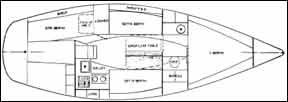 Owners consider the boat underpowered with either the Renault or Yanmar engines. They consider the boat’s performance under power only fair to good. Deck Layout Because the Hunter 27’s decks are relatively free of sail control hardware, there are relatively few toe stubbers. Even the grayest cloud has a silver lining. New Hunter 27s have international style running lights mounted on the bow and stern pulpits. These are far superior to the in-hull running lights on older Hunters, and better than those used on many more expensive boats. New boats also have a good-sized foredeck anchor well, incorporating a well-designed latch and a heavy stainless steel eye for the attachment of the bitter end of the anchor rode. The well has a large scupper which drains through the stem. Although owners consider the cockpit of the Hunter 27 small, we find it comfortable for five, and certainly large enough for a 27′ boat. Wheel steering has definitely made the cockpit seem bigger. With five people in the cockpit, the stern of the boat begins to squat. A bigger cockpit would only encourage sailing with more people, causing the boat to squat even more. Late models have Yacht Specialties pedestal steering. There is good provision for an emergency tiller, which is supplied with the boat. Access to the steering gear is excellent, through the lazarette locker. Unfortunately, because the steering gear, scupper hoses, and exhaust hose go through this locker, it cannot be used for storage. To do so would be to risk damage to vital parts of the ship’s systems. There is a large locker under the starboard cockpit seat. Unfortunately, because the fuel tank is located in this locker, nothing can really be stowed there without risking damage to the fuel system. Wet lines or sails stored in the locker would drip on the aluminum tank, inviting corrosion. Shelves installed in both these lockers would make them more useful. To raise the cockpit sill above the level of the lowest cockpit coaming, the lower drop-board must be left in place, This complicates access below when underway, but having the companionway blocked up to deck level is essential for sailing in unsheltered waters or heavy weather. The cockpit bulkhead slopes forward. This means that a dodger must be installed if one wishes to ventilate the cabin in rain or heavy weather. The high cockpit coamings provide good backrests for those sitting in the cockpit. They should also help keep the cockpit dry. These coamings have moldedin sheet winch islands. The owner wishing to upgrade to winches larger than the standard Lewmar 7s will discover that the islands are too small for a much larger winch. For the owner who wishes to use a large genoa, this could be a real problem. Despite these shortcomings, the T-shaped cockpit is reasonably comfortable, and is one of the boat’s better design features. The Hunter 27 is a roomy boat. Headroom is just over 6′ under the main hatch, and almost 5′ 10″ at the forward end of the main cabin. The forepeak contains a double berth. Aft of that cabin is a full-width head. Newer Hunter 27s have a holding tank system. Older boats are likely to have portable heads. The main cabin has settee berths port and starboard. These settees extend under the forward bulkhead. While this arrangement reduces seating area, it also allows more room for the galley and quarterberth. It’s a reasonable trade-off. To port, at the aft end of the cabin, there is a quarterberth. A folding chart table is located over the forward end of the quarterberth. To starboard is the galley, with sink, two-burner alcohol stove, and icebox. With eight opening ports, two opening hatches, and the companionway, ventilation in newer Hunter 27s is excellent at anchor in good weather. Older models have fewer opening ports. As with many boats, there is no provision for ventilation in heavy weather. With a molded glass headliner, teak-finished bulkheads, solid teak trim, and teak cabin sole, the cabin has a finished appearance. There is good storage for a boat of this size for short-term cruising. Joinerwork is of fair stock boat quality. Conclusions A new Hunter 27 in the ’80s was about the least expensive boat in its class—far cheaper than many other boats of this size. The boat also comes standard with items that are optional on other boats, such as wheel steering, life jackets, anchor, and fire extinguishers. However, it is not realistic to expect a boat that is 15% cheaper than another boat of the same size and type to be equivalent in quality. There is just so much that efficiency, standardization, and bulk buying can do toward reducing the price of a boat. Inevitably, the price of a boat is a function the time, materials, and incidental costs that go into it. There is no magic way to reduce the cost of building a boat. The Hunter 27 graphically demonstrates how costs can be reduced. A great deal of time is saved in construction by hurrying finish work, by using staples instead of screws, by eliminating the necessity to customize each boat. Hunter owners are the first to admit the influence that the low price of the boat had on their boat-buying decision. Many are happy with their boats, some are defensive about them, and others are really unhappy with them. For the relatively unsophisticated sailboat buyer—the new sailor, the powerboat convert—the Hunter 27 may represent a good value. As his experience grows, we expect he will be willing to pay more, in order to get more. RELATED ARTICLES MORE FROM AUTHORThank you for this article as I, a novice am about to rehab and deal with a 1978 Hunter. As I go through this I suspect many a sentence will ring in my mind to remind me what an experienced sailor has: time to reflect on learning experiences and sharing it with others. Best Wishes and fair winds – Alex Schult I have a 1979 Hunter 27 I have completely restored her I re manned a yanmar 20gmf new North Sailes new standing and running rigging keel bolts do not leak self tailing winches yes she is a production boat but points and sails fine for cruising. Interior completely renovated hmmn no staples! I have seen and been on some so called higher end boats quality and preformence is a matter of opinion you need deep pockets for a custom boat if you have the $$$ go for it for me I’ll stick with my Hunter 27 Aura great boat without breaking the bank!😎 Hey Theodore, I’ve owned a 82 Hunter 27’ for over 20 years. I took a job about 5 years ago that included a lot of international travel and found myself using my boat for doc candy and Christmas decorations at our home doc. So, I’m beginning a complete refrub, which includes a new Yanmar motor (ouch). I’ve got quite a bit of interior and exterior rehab with not a lot of experience. Anyway I could pull on some of your experience? We purchased a 1979 Hunter 27 in 2020 as an upgrade from our Nordica 16. Our territory (the Baie de Chaleurs) in northern New Brunswick Canada has a reputation for unpredictable winds and weather. I installed wheel steering (an Edson outfit) which greatly improved my enjoyment. However, I still has issued with docking using the low-cockpit controls for the Yanmar diesel. Researching for solutions, I came across the website of “Electric Yacht” out of Minnesota. So, in 2021, I converted the drive to electric. It has taken me two years to sell the Yanmar. The conversion cost me around $15,000 CA including 4 hours for a machinist to align the propeller shaft and electric motor properly (the hardest part). We are more than happy with the results. Docking now is a joy. I even learned to back-in to our berth and my eyes are always on my surroundings. All the controls are on my binacle The 10 KW motor uses four 150 AmpHr lithium iron-phosphate batteries and works flawlessly. We have even crossed the bay to Quebec twice under just power alone. No gas, no fumes, no noise. He are happy saiiers 🙂 LEAVE A REPLY Cancel replyLog in to leave a comment Latest Videos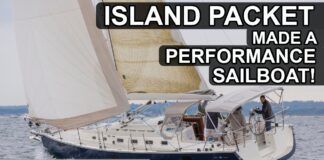 The Performance Sailboat from Island Packet: Blue Jacket 40 Boat Review Top 3 Winter Boat HACKS! Cabo Rico 34 Boat Review Super Shallow Draft Sailboat: The Leeboard SharpieLatest sailboat review. 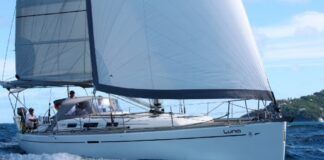 - Privacy Policy
- Do Not Sell My Personal Information
- Online Account Activation
- Privacy Manager
 |
IMAGES
VIDEO
COMMENTS
Find information on Hunter sailboats built by Hunter Marine (USA) from 1972 to 2024. Browse by model, length, year, designer and features.
Hunter Marine, now Marlow-Hunter, LLC, is a boat builder founded in 1973 by Warren Luhrs. It produces sailboats of various sizes and designs, such as the Hunter 336, the HC 50, and the Ocean racing sailboat.
Find new and used Hunter sailboats of various models, sizes and prices on Boat Trader. Browse photos, features, locations and contact sellers of Hunter boats across the US.
Hunter preowned sailboats for sale by owner. Hunter used sailboats for sale by owner.
Warren Luhrs, founder of Hunter Marine began in the boat building business, first with his father and brother at Henry Luhrs Sea Skiffs and then Silverton Sea Skiffs. Both companies were quite successful. Being an avid sailor, Luhrs had the idea of applying production line efficiencies to the sai...
The Hunter 37 is a 37-foot cruiser with lots of space, an easy-to-handle rig and a modern appearance. Read the boat review, see the photos and learn about its construction, deck layout, accommodations and sailing performance.
MARLOW HUNTER 15 High freeboard, a raised boom and sturdy FRP construction make the Marlow-Hunter 15 daysailer a safe, versatile boat that both families and greenhorn sailors will love. Designed with the novice in mind, the high sides, contoured self-bailing cockpit, and a comfortable wide beam will lend a confident feeling while under sail.
The Hunter 40 is a mid-size sailboat with a low-profile coachroof, a dramatic port window and a near-plumb bow. It sails well, has a spacious cockpit and accommodations, and can be fitted with a removable bowsprit for more sail options.
A new model, a new name, and new ownership for Hunter sailboats looks like a step in the right direction for a sailboat builder that has been around since 1975.
Hunter Yachts came into being amid the energy crunch in the early 1970s. Silverton, a large manufacturer of smaller powerboats, expanded to build "energy-conscious" sailboats. It started with three boats, two John Cherubini-designed performance cruisers, the Hunters 27 and 30, and a Robert Seidelmann/J. Cherubini-designed small (MORC) racer, the Hunter 25.
Learn about the history, design, and features of the Hunter 30, a coastal cruiser that was built from 1974 to 1983. Find out how it compares to other boats in its size and class, and what to look for when buying one.
Hunter Boats is a privately held company based in Southampton that produces glassfibre sailboats. It was founded in 1969 and has designed and built various models of cruising and racing boats, such as the Hunter 707 and the Hunter 20 Sport.
A low-priced 27-foot cruising boat with a diesel engine and a modern rig. Read about its construction, performance, and drawbacks in this detailed review.
Learn about the history and models of Hunter Boats, one of the largest sailboat builders in Britain. Find out the LOA, first built date, and favorite features of 28 Hunter sailboats from 1969 to 2003.
The Evenki, [ a ] also known as the Evenks and formerly as the Tungus, are a Tungusic people of North Asia. In Russia, the Evenki are recognised as one of the Indigenous peoples of the Russian North, with a population of 38,396 (2010 census). In China, the Evenki form one of the 56 ethnic groups officially recognised by the People's Republic of ...
Tomsk - Weather forecast from Theweather.com. Weather conditions with updates on temperature, humidity, wind speed, snow, pressure, etc. for Tomsk, Tomsk
Kargasok ( Russian: Каргасок) is a rural locality (a selo) and the administrative center of Kargasoksky District of Tomsk Oblast, Russia, located on the left bank of the Ob River, 460 kilometers (290 mi) from Tomsk, the administrative center of the oblast. Population: 8,127 ( 2010 Russian census); [ 1] 8,547 ( 2002 Census); [ 2] 8,450 ...
Vozdushny Park 2 reviews #310 of 403 things to do in Tomsk Parks Write a review Be the first to upload a photo Upload a photo